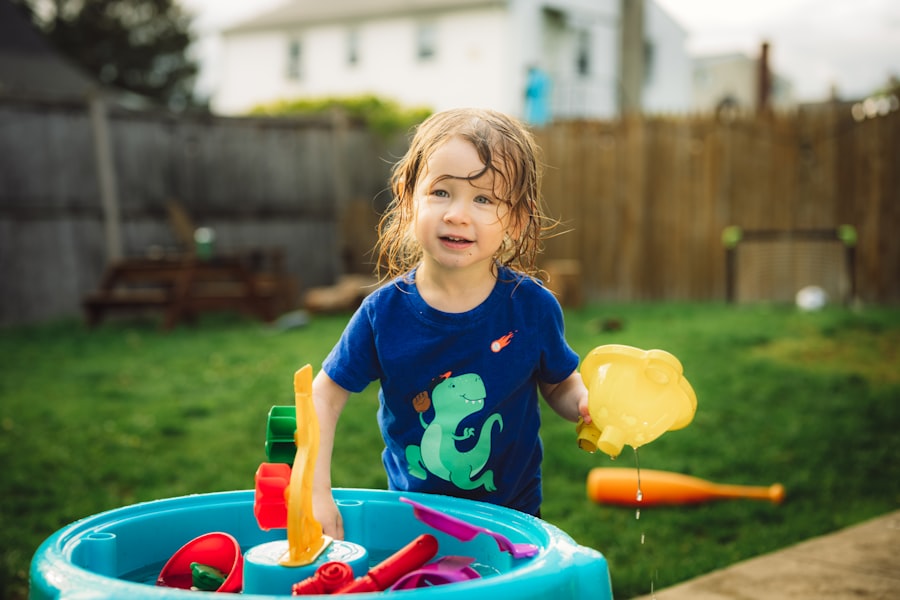Educational games serve as an effective tool for engaging children in learning while providing entertainment. These games can foster the development of essential skills, including critical thinking, problem-solving, and creativity. DIY educational games offer a unique advantage, allowing parents and educators to create customized learning experiences tailored to children’s specific needs and interests.
This approach can be particularly beneficial for parents seeking to supplement their child’s education or teachers looking for innovative teaching methods. By creating educational games at home, individuals can design activities that align with specific learning objectives and preferences. This article will examine the advantages of homemade educational games, necessary materials for their creation, step-by-step instructions for making them, examples of DIY educational games, strategies for incorporating them into learning environments, and concluding thoughts on their effectiveness and potential impact.
Key Takeaways
- DIY educational games are a fun and effective way to enhance learning at home.
- Making educational games at home can help improve critical thinking and problem-solving skills in children.
- Materials needed for DIY educational games include common household items like paper, markers, and dice.
- Step-by-step instructions for creating educational games can be easily found online or in educational books.
- Examples of DIY educational games include math bingo, sight word memory, and science scavenger hunts.
Benefits of Making Educational Games at Home
There are numerous benefits to making educational games at home. Firstly, DIY educational games can be tailored to suit the specific needs and interests of the children you are working with. This level of customization allows you to create learning experiences that are engaging and relevant to the children, making the learning process more enjoyable and effective.
Additionally, making educational games at home can be a cost-effective way to supplement a child’s education. Many educational resources can be expensive, but by creating your own games, you can save money while still providing valuable learning experiences for children. Furthermore, DIY educational games can be a great way to bond with your child or students.
Working together to create games fosters a sense of collaboration and teamwork, and can be a fun and rewarding experience for everyone involved. Another benefit of making educational games at home is that it allows for flexibility and creativity in the learning process. You can tailor the games to focus on specific skills or subjects that the children need to work on, and you can incorporate their interests and hobbies into the games to make them more engaging.
This level of customization can help children stay motivated and interested in learning, as they are more likely to be engaged in activities that are personally meaningful to them. Finally, DIY educational games can provide a hands-on learning experience that is both fun and effective. By creating and playing these games, children can develop important skills such as critical thinking, problem-solving, and creativity in a way that feels like play rather than work.
Materials Needed for DIY Educational Games
Creating DIY educational games does not have to be complicated or expensive. In fact, many of the materials needed can be found around the house or purchased at an affordable price. Some common materials that you may need include paper, markers, scissors, glue, cardboard, dice, playing cards, and various art supplies such as colored pencils, paint, and craft sticks.
Additionally, you may want to consider using everyday objects such as buttons, bottle caps, or small toys to create game pieces or props for your educational games. For more advanced projects, you may also need access to a computer and printer to create game boards or other materials. When choosing materials for your DIY educational games, it’s important to consider the age and skill level of the children who will be playing the games.
For younger children, you may want to focus on simple games that use basic materials and are easy to understand. For older children, you may be able to incorporate more complex materials and game mechanics into your projects. Ultimately, the materials you choose will depend on the specific game you are creating and the needs of the children who will be playing it.
Step-by-Step Instructions for Creating Educational Games
Creating DIY educational games can be a fun and rewarding process. Here are some step-by-step instructions for creating your own educational games at home: 1. Choose a Learning Objective: Start by identifying the specific skill or concept that you want the game to focus on.
This could be anything from math facts to vocabulary words to science concepts. 2. Design the Game: Once you have chosen a learning objective, brainstorm ideas for how to turn it into a game.
Consider what materials you will need and how the game will be played. 3. Gather Materials: Collect all of the materials you will need to create the game.
This may include paper, markers, scissors, glue, cardboard, dice, playing cards, and any other supplies that are relevant to your game. 4. Create Game Components: Use your materials to create game components such as game boards, cards, dice, and game pieces.
Be creative and think outside the box when designing these components. 5. Test the Game: Once you have created all of the game components, test the game to make sure it is fun and engaging.
Make any necessary adjustments to the rules or components to improve the gameplay. 6. Play the Game: Finally, play the game with your child or students and observe how they interact with it.
Pay attention to their reactions and use their feedback to make further improvements to the game. By following these steps, you can create your own educational games that are tailored to the specific needs and interests of the children you are working with.
Examples of DIY Educational Games
There are countless possibilities when it comes to creating DIY educational games. Here are a few examples of educational games that you can make at home: 1. Math Bingo: Create bingo cards with math problems on them and use dice or number cards to call out the problems.
Children can solve the problems on their bingo cards and mark off the answers as they are called. 2. Sight Word Memory: Write sight words on index cards and create a memory game by placing them face down on a table.
Children take turns flipping over two cards at a time, trying to find matching sight words. 3. Science Scavenger Hunt: Create a scavenger hunt with clues related to science concepts that children have been learning about in school.
This game can be played indoors or outdoors and encourages children to apply their knowledge in a fun and interactive way. 4. Spelling Bee Board Game: Design a board game where players move around the board by correctly spelling words.
Include challenge spaces where players have to complete spelling tasks to advance. These examples demonstrate how simple materials can be used to create engaging and effective educational games that support learning in various subjects.
Tips for Incorporating DIY Educational Games into Learning

Incorporating DIY educational games into learning can be a valuable addition to any educational program. Here are some tips for effectively using DIY educational games: 1. Align Games with Learning Objectives: Ensure that the games you create align with specific learning objectives or skills that children need to develop.
This will help ensure that the games are relevant and beneficial to their education. 2. Keep Games Engaging: Make sure that the games are fun and engaging for children by incorporating elements such as competition, teamwork, or rewards.
This will help keep children motivated and interested in playing the games. 3. Provide Clear Instructions: When introducing a new game, provide clear instructions on how to play and any rules or guidelines that need to be followed.
This will help ensure that children understand how to play the game effectively. 4. Offer Opportunities for Reflection: After playing a game, take time to discuss with children what they learned from the experience and how it relates to their education.
This reflection can help reinforce learning and make connections between the game and academic concepts. 5. Rotate Games Regularly: To keep things fresh and exciting, consider rotating through different educational games on a regular basis.
This will prevent children from getting bored with the same activities and provide opportunities for new learning experiences. By following these tips, you can effectively incorporate DIY educational games into learning in a way that is engaging and beneficial for children.
Conclusion and Final Thoughts
In conclusion, DIY educational games offer a unique opportunity for parents and educators to create customized learning experiences for children that are engaging and effective. By making educational games at home, you can tailor activities to suit specific needs and interests while also providing hands-on learning experiences that are both fun and beneficial for children’s development. With simple materials and creativity, it is possible to create a wide variety of educational games that support learning in various subjects such as math, language arts, science, and more.
Ultimately, DIY educational games can be a valuable addition to any educational program by providing opportunities for personalized learning experiences that are enjoyable for children while also supporting their academic development. Whether you are a parent looking for ways to supplement your child’s education or a teacher seeking innovative teaching tools, DIY educational games can be a valuable addition to your toolkit. By following the tips provided in this article and using your creativity and imagination, you can create engaging and effective educational games that support learning in a fun and interactive way.




